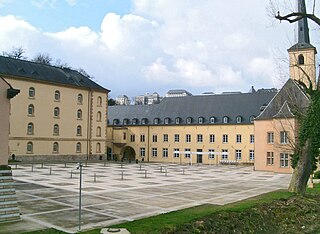Visit Luxembourg in 2 days
13 must-see POIs, optimized routes and anecdotes.
Loading map...
You will visit the most beautiful points of interest in Luxembourg
2 Days in Luxembourg — A Tiny Capital with Monumental Charm
Luxembourg stole my heart the moment I stepped off the train. The city feels like a secret garden perched on cliffs. Its motto, "We want to remain what we are," whispers from old stone and modern glass. Some say it's overrated, but that misses the point. I came skeptical and left enchanted, notebook full and stomach happy from a tiny café by the Fishmarket.
Why visit? Because Luxembourg mixes medieval fortresses with sleek museums in a way few places do. Wander through echoing naves at Saint Michael's Church and Notre-Dame Cathedral. Stand in Guillaume II Square and feel the city's pulse between statues and cafés. You will taste buttery pastries, hear church bells spill over valleys, and see views that make you exhale. This is not only a list of landmarks. It is a feeling—cozy yet grand, intimate but full of surprises.
Planning a short trip can feel overwhelming. There is so much to see you could easily stay for weeks. If this is your first time in Luxembourg, you’ll wonder what to prioritize. I get it—time is tight and choices pressure you. That’s exactly why I created a compact Luxembourg itinerary designed to show you the best of the city in two full, soulful days. Below I map out 16 highlights, from cathedral halls to the Ministry of State façade, so you can focus on soaking it in instead of stressing.
Key tip: Start early at major sights and leave late for quiet streets. Morning light softens the ramparts and crowds are thin. That extra hour means better photos, calmer cathedral visits, and a slower pace that makes the city feel timeless. Trust me, Luxembourg rewards the patient traveler. Now let’s dive into the itinerary and make the most of your 2 days in Luxembourg!

Quick Mini Guide to Luxembourg
Where to stay:
- Ville Haute — central, walk to Notre‑Dame, Guillaume II Square and government buildings.
- Grund — atmospheric valley location, best for evening photos of the old fortifications.
- Near Gare — practical if arriving by train or doing day trips to Trier/Clervaux.
When to visit:
- Late spring or early autumn — mild weather, fewer river-valley mists and crowded viewpoints.
- Weekday mornings — quiet streets at Saint Michael’s Church and Fishmarket (excellent light for photos).
Things to do:
- Walk the Corniche and Fishmarket for the “most beautiful balcony of Europe” views into the Alzette gorge.
- Visit Notre‑Dame Cathedral and Saint Michael’s Church — note compact medieval layers and rooftop views.
- See Guillaume II Square (market on select days) and peek at the Ministry of State façade nearby.
- Book interactive tours: Secrets of Luxembourg for history in the old city; The Alchemist LUXEMBOURG for a gamified city hunt.
Don't forget:
- Public transport is free — use trams/buses to save time between hilltop and valleys.
- Good walking shoes for cobbles and steep stairs; charge your camera for panoramic shots.
- Reserve interactive tours in advance (limited spots) and check opening hours for churches/government buildings.
Day 1 - Luxembourg
3 POIs to discoverDay 1 - Morning à Luxembourg
3 Points of interest - Duration : 1h45 - Distance : 0.9 km - Walking : 0h11
Monument of Remembrance
- The 'Monument du Souvenir', also known as 'Gëlle Fra' (meaning 'Golden Lady' in Luxembourgish), is a monument dedicated to the memory of Luxembourg soldiers who fell during the World Wars and the Korean War.
- The popular name refers to the golden woman statue carried by the obelisk, which symbolizes peace and patriotism; the monument primarily commemorates Luxembourg soldiers who fell in the French armies during World War I.⭐ The monument is made up of a raised square base that supports a 21-meter-high obelisk, topped with the golden statue of a woman extending a laurel wreath.
- In front of the base are two bronze statues: a sitting man watching over the body of a fallen comrade.
- During the Nazi occupation, the statue was removed, and the base was destroyed due to its francophile symbolism, which was unwelcome to the German occupants.
- The monument was eventually demolished in October 1940.
- After World War II, the statue reappeared for an exhibition in 1955, before it went missing until 1981 when it was found under the stands of the Josy-Barthel stadium.
- The reconstructed monument was inaugurated in 1985.

Palais de Justice
- It is one of the largest court buildings in Europe.
- It houses court facilities and courtrooms.
- Its construction began in 1835 and was completed in 1848.
- Its law library is one of the most extensive in Europe.

Place d'Armes
- The Plaza de Armas is a popular meeting point filled with cafés and restaurants.
- Once used as a parade ground by Louis XIV's troops, today it hosts public concerts and the Christmas market.
- Cercle Cité, formerly Cercle Municipal, has been transformed into a Congress and Exhibition Center.
- In the heart of the old town, this historic square was once a parade ground for troops defending the city.
- Its name, "Place d'Armes," recalls its military past as a place for troops to gather and for military ceremonies.
Day 2 - Luxembourg
10 POIs to discoverDay 2 - Morning à Luxembourg
5 Points of interest - Duration : 3h15 - Distance : 0.8 km - Walking : 0h11
Charlotte
- The Grand Duchess Charlotte Monument is a bronze statue designed by French sculptor Jean Cardot.
- It was erected in 1990 in honor of former Grand Duchess Charlotte of Luxembourg who ruled from 1919 to 1964.
- The monument was officially inaugurated on April 29, 1990, in the presence of the grand ducal family.
- The artwork, standing about 2.75m high, is placed on a flat round base which rests on a plate-shaped base.
- The sculpture, executed in simplified forms, depicts the figure swathed in a wide coat, with the right arm protruding with its palm facing the sky as if in greeting.
- This gesture has been interpreted as a begging hand, leading locals to sometimes refer to the monument as "Heeschefraa" ( begging woman) in jest.

Grand Ducal Palace
- The Grand Ducal Palace of Luxembourg is the official residence of the Grand Duke of Luxembourg.
- The grand ducal family resides in Berg Castle, while the Grand Ducal Palace is used for official representation.
- Part of the palace is used for official functions and state ceremonies.
- Although the interior cannot be visited, the façade and architecture are impressive.

Cercle Municipal
- The Cercle Municipal, also known as Cercle Cité, is a significant building in Luxembourg City, initially purposed as an administrative facility. The design competition for the building's construction, held in 1902, was won by father and son team Pierre and Paul Funck in 1904.
- The front of the neo-baroque styled building features a frieze that depicts the granting of the city charter to Luxembourg City in 1244.Between 1952 and 1969, the Cercle Municipal was the site of the European Coal and Steel Community's Court of Justice.
- During the COVID-19 pandemic in 2020 and 2021, the building was used as the meeting place for the Chamber of Deputies due to imposed restrictions.
- In 2006, comprehensive restoration work transformed the Cercle Municipal into a convention and exhibition centre, including various enhancements and adding a bridge to an adjacent building to expand facilities, after which it acquired the name Cercle-Cité.
Refuge Sankt Maximin
- Seat of the Ministry of Foreign and European Affairs until February 2017.
- Since June 2019, houses the Presidency of the Government and the seat of the Ministry of State.
- Founded by Sigefroid of Luxembourg in 963.
- In 1751, construction of a Baroque building with the inscription "Refugium Abbatiae S.
- Known to secularize in 1802, becomes private property, then government residence.
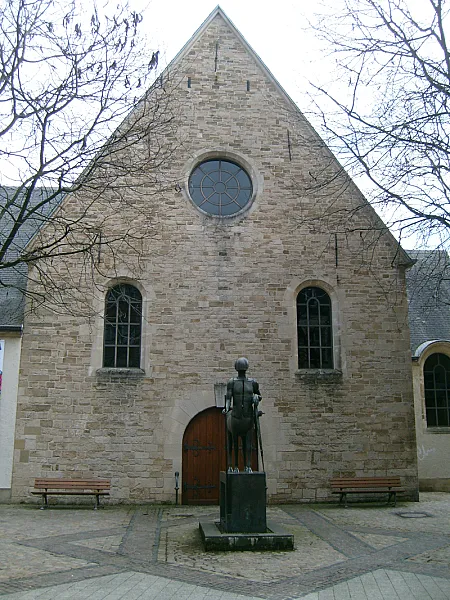
Théâtre des Capucins
- Théâtre des Capucins is a well-known theatre in Luxembourg.
- This theatre is part of the Théâtres de la Ville de Luxembourg network.
- The director of the theatre is Frank Feitler.
- It is located in the heart of Old Town.
- Performances there are conducted in German, French, and Luxembourgish.
Day 2 - Afternoon à Luxembourg
5 Points of interest - Duration : 4h00 - Distance : 0.8 km - Walking : 0h10.jpeg)
Notre-Dame Cathedral
- The Cathedral Notre-Dame is the Roman Catholic Cathedral of Luxembourg City and the only cathedral in Luxembourg.
- It was originally a Jesuit church. ⏰ The cathedral's cornerstone was laid in 1613 and it was expanded between 1935 and 1938.
- Notre-Dame Cathedral is a mixture of late gothic and renaissance architecture and houses a miraculous image of Our Lady of Consolation, the patron saint of the city and the nation.
- The cathedral features contributions by German sculptor Daniel Muller, including an organ tribune and early Baroque angels crafted in alabaster.
- The cathedral was consecrated as the Church of Our Lady fifty years after its construction and elevated to a cathedral in 1870 by Pope Pius IX.
- On Good Friday, 5 April 1985, the west tower caught fire causing significant damage to the cathedral, with repairs completed by October of the same year.
- The crypt of the cathedral is the final resting place for the remains of Grand Dukes and Grand Duchesses of Luxembourg.

Guillaume II Square
- Place Guillaume II is a central square in Luxembourg, also known as Knuedler in Luxembourgish.
- Located in the Ville-Haute district, it is named after Guillaume II, King of the Netherlands and Grand Duke of Luxembourg.
- The history of the square dates back to the 13th century, with a Franciscan church and monastery.
- The French confiscated the monastery in 1797, and the square was rebuilt over the decades.
- The current neoclassical town hall was built in 1830 by architect Julien-Étienne Rémont and completed in 1838.
- In 1884, an equestrian statue in honor of William II of Orange-Nassau was erected on the square.
- The pedestal bears the coats of arms of the House of Orange-Nassau and of the city of Luxembourg, as well as those of the twelve cantons.
- The square offers a magnificent view of the town hall, the grand-ducal palace, and houses several monuments, including the Renert Monument.
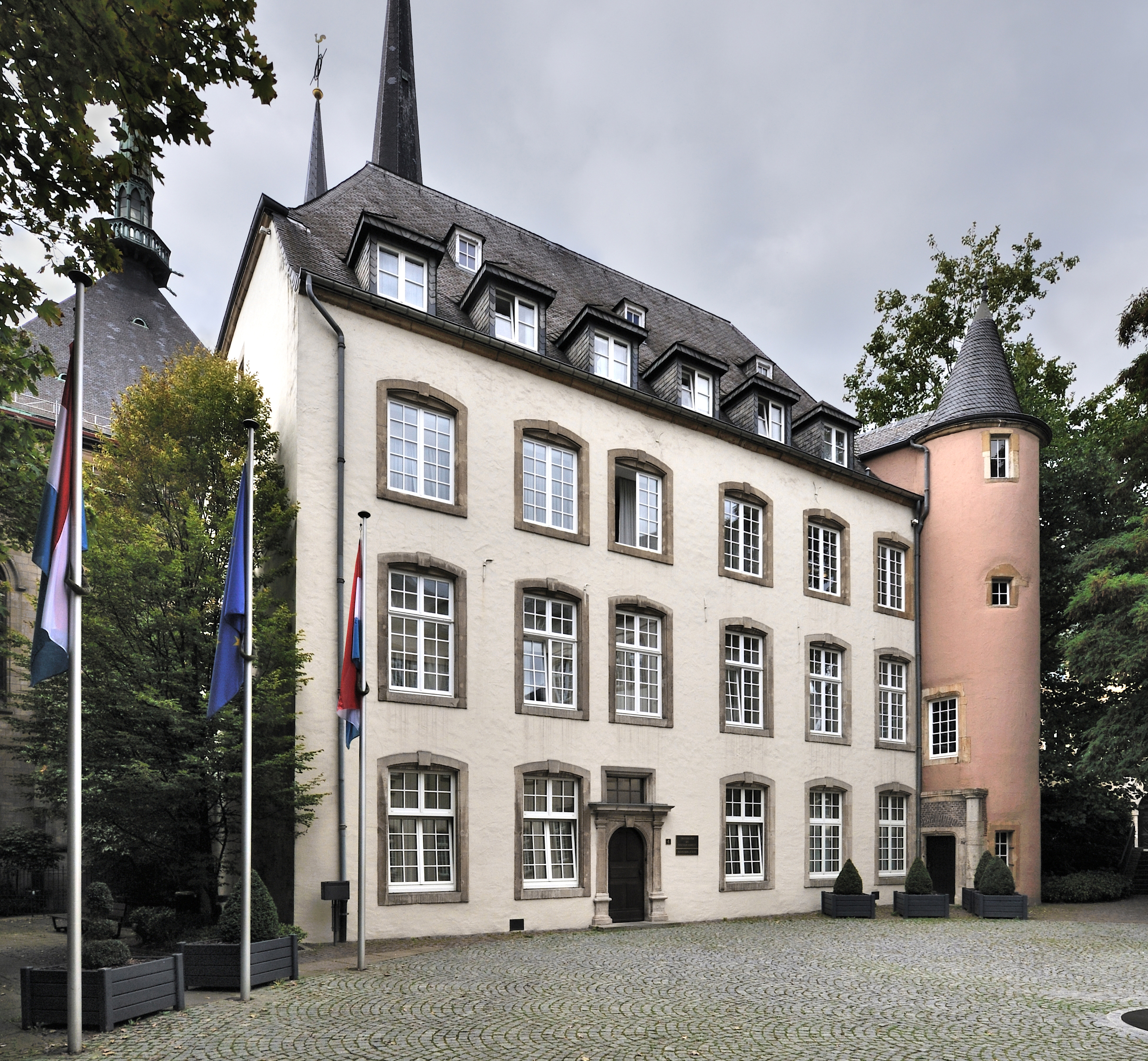
Ministry of State
- Luxembourg's Ministry of State is a key government body.
- Its head is the Prime Minister of Luxembourg, who is also the Head of Government.
- It is responsible for policy coordination and government decision-making.
- It plays a key role in representing the country in international affairs.
- It administers the government and works in close collaboration with other ministries.

National Museum of History and Art
- The National Museum of History and Art (MNHA) is dedicated to displaying artworks and artifacts from all epochs of Luxembourg history.
- The first proposal for such a museum was made during the French occupation of the Revolutionary Wars, however, the museum was never opened.
- The responsibility of maintaining a collection of historic antiquities was taken over by the 'Society for the Study and Preservation of Historic Monuments in the Grand Duchy of Luxembourg' in 1845.
- In 1939, the museum moved its collections to secure them due to the beginning of World War II.
- The museum acquired 3,500 items during the Nazi occupation, from 1940 to 1945.
- In 1988, the museum was separated into the National Museum of History and Art and the National Museum of Natural History.
- In 2002, the museum was expanded with a new building designed by Christian Bauer et Associés.

Neumünster Abbey
- Neimënster Abbey is a former monastery of Benedictine monksfrom the 17th century.
- After a fire in 1684, the abbey was rebuilt in 1688 and enlarged in 1720.
- After the French Revolution, it was put to non-ecclesiastical uses: prison, police station, then Prussian barracks after Napoleon's defeat in 1815, then state prison in 1867.
- Since 1977, the abbey has become the Centre Culturel de Rencontre Abbaye de Neimënster (CCRN).
- It houses the European Institute for Cultural Routes.
- On April 25, 2005, the treaty of accession of Bulgaria and Romania to the European Union was signed in the abbey.
Where to Stay in Luxembourg
Location matters in Luxembourg because the city is small but vertically dramatic: you often move between the high town and the valleys, and minutes can feel like a world when stairs and bridges are involved. For a two-day visit, choose a base that keeps your walking distances short to the sights you care about, allows easy arrival and departure, and suits your tolerance for hills. Think of your neighbourhood choice as a way to trade minutes for atmosphere — a few extra steps can put you in a postcard setting.
The city is organised around the historic upper town and the lower river valleys. The compact core around the cathedral and the main square is where civic life has long centred, while the Alzette valley and the riverside quarters have a quieter, more intimate feel. If you’re planning to visit Saint Michael’s Church, Luxembourg and the Fishmarket, you’ll appreciate being close to the riverside promenades; if Notre-Dame Cathedral, Guillaume II Square and the Ministry of State are your priorities, staying in the upper town saves time and lets you step outside into grand squares and pedestrian streets.
For most visitors I recommend focusing on two complementary areas. Ville Haute places you within easy reach of the Ville Haute landmarks like Notre-Dame Cathedral and Guillaume II Square and keeps official buildings such as the Ministry of State within a short walk. For atmosphere, the lower quarter around the Alzette — the Grund and the Fishmarket area — offers picturesque streets, river views and close access to Saint Michael’s Church, Luxembourg. If you value transport connections, consider staying near the Gare so trains and buses are immediately at hand.
Transport in Luxembourg is unusually straightforward: the central city is extremely walkable but also served by frequent buses and a network of funiculars, lifts and pedestrian bridges that make steep parts manageable. Public transport across the country is free, which is handy for short hops or arriving from the airport; taxis and bike rentals are also plentiful if you want to save your legs after a day of sightseeing. Keep in mind some streets are steep and cobbled, so check whether your accommodation has an elevator if stairs are a concern.
Finally, relax about the choice: for two days pick the vibe you want — history and squares in the upper town or charm and river views in the lower quarter — and prioritise proximity to your top sights. Book a place with clear arrival instructions and at least decent luggage access, and you’ll spend your time enjoying Saint Michael’s Church, the Fishmarket, Notre-Dame Cathedral and Guillaume II Square rather than worrying about getting back to your room.
Getting Around Luxembourg
Getting around Luxembourg is one of the pleasant surprises of visiting Europe: the network is compact, punctual and very easy to use even if you’re here for just a couple of days. The city is served by the national train operator CFL, a neat network of bus lines and the modern tram — in the centre everything feels within reach. Because the system is small and well signed, you won’t need to wrestle with complicated transfers; route maps are clear, stops are frequent, and announcements are often bilingual, so you can relax and enjoy the views as you travel. 🚇
A practical tip about fares and paperwork: since March 2020 most public transport within Luxembourg is free public transport — that means buses, trams and domestic trains generally require no ticket. That said, if you’re planning cross-border trips into Germany, France or Belgium you’ll need to buy an international ticket, so check before you hop on. If you prefer a physical guide, the Luxembourg Card can be handy for tourists who want museum discounts and organised excursions, but it’s optional for getting around the city itself. 🎫
When it comes to navigation I rely on Google Maps and the CFL app in tandem: Google does a great job showing walking times, tram stops and where to change, while CFL gives live train info and platform details. Search the place name, pick "transit" and you’ll see clear options — some are a short walk, others a quick tram ride. For unexpected schedule changes, the apps update in real time, which makes it easy to stay flexible and enjoy your day without stress. 🗺️
Money-wise, Luxembourg is a breath of fresh air: because local transport is free you’ll save on the usual transit card expenses, leaving you more to spend on food, a museum or a cozy café. Consider using the city’s Park & Ride facilities if you arrive by car, and avoid taxis for short hops in the centre — public transport or a brisk walk will usually be faster and far cheaper.
On my last visit we decided to explore between Saint Michael's Church and the Fishmarket before heading to Notre-Dame Cathedral. Instead of waiting for a bus we walked the charming cobbled lanes, popped down a viewpoint staircase, and reached the Fishmarket in ten minutes — then took a two-stop tram to Notre-Dame to save time before a museum opening. That mix of walking and a single short ride is exactly why Luxembourg’s transport feels so effortless: you can improvise, enjoy the city and always find a quick, reliable way to your next stop.
What to Pack for Luxembourg
Short trip, big history — Luxembourg’s compact old town and cathedral-lined streets invite long, slow wandering. On my last 48-hour visit I was out for 10+ hours each day, climbed the casemates steps, and walked about 12 miles total. Here are the essentials I actually used and why each one mattered in real situations.
1. Comfortable walking shoes (Merrell Moab 2 or similar): I wore my Merrell Moab 2s and they saved my feet on cobblestones and steep staircases — I logged roughly 12 miles across Luxembourg City in one day. Stiff soles protect your arches on uneven pavements and the grippy tread stops me slipping on damp stone near the fortifications. Don’t bring new shoes — break them in first.
2. Cross-body bag: I carried a medium cross-body with a zip and RFID pocket for my passport and camera. It keeps valuables close in crowded squares and inside churches when I sat quietly for 20–30 minutes. A bag that sits across your chest is much easier to manage on stairs and avoids the shoulder strain of a tote when you’re out 10+ hours.
3. Weather-appropriate layers (light waterproof jacket + scarf): Luxembourg weather flips quickly — during one morning I had sun, by afternoon a light rain and chill. I layered a thin fleece under a packable waterproof jacket and used a scarf for warmth in cool churches. Layers let you be comfortable sitting quietly in a cathedral or walking briskly along the Alzette valley.
4. Power adapter (Type C/E, 230V) and a short USB-C cable: Plugs are Type C/E and the voltage is 230V — I forgot this once and had to hunt for an adapter before evening photography. A small travel adapter plus a short cable lets you recharge in small guesthouse rooms between visits to Notre-Dame Cathedral and the Grand Ducal Palace.
5. Power bank (10,000–20,000 mAh): My 10,000 mAh power bank gave me one full phone charge plus camera battery top-ups during a long day of photographing stained glass and city views. When I missed a cab or extended a visit in a church, having juice for maps and photos was a literal lifesaver.
6. Optional — lightweight scarf (for church modesty) & pocket notebook: I always keep a thin scarf to cover shoulders if needed in sacred spaces and a small notebook to jot down names of churches, quiet moments, or service times. Both are small but made the difference between respectful entry and scrambling to cover up or losing a memory.
Enjoy Your Trip to Luxembourg!
In two vibrant days you'll explore 16 lively spots across Luxembourg, from the medieval charm of Saint Michael's Church and the lively Fishmarket to the soaring Notre-Dame Cathedral. This itinerary is packed with history, culture and cathedral visits, giving you everything you need to taste the city's highlights, stroll its fortifications and feel its warm atmosphere.
Remember, this is a guide, not a rigid schedule — leave room for the unexpected. The real magic in Luxembourg often comes from unplanned moments: getting pleasantly lost in Grund, stumbling on a quiet chapel, or pausing for a spontaneous café stop after Fishmarket. Don't feel pressured to see EVERYTHING; wandering and small discoveries often become the richest memories. Take time to breathe and savor.
I hope you fall in love with Luxembourg's layers of history and its cozy corners. I'm excited for you to wander the casemates, light-filled cathedrals and riverside paths — you're going to have an amazing time and create unforgettable memories that you'll cherish long after you leave.
Want a playful way to explore? Check out Coddy tours like Secrets of Luxembourg and The Alchemist LUXEMBOURG — gamified city adventures that turn sightseeing into puzzles and stories. They're a fun, low-pressure way to discover hidden corners and learn local history while you play.
Have an incredible two days — take photos, ask questions, taste local treats, and share your stories when you get back. Safe travels!
Want more adventure?
Discover our urban escape games to transform your visit into an interactive adventure!














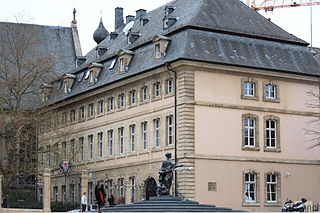


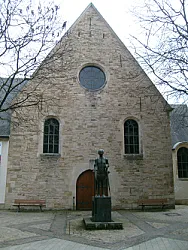
.jpeg/320px-Luxembourg_City_Eurotrip_(133169443).jpeg)



